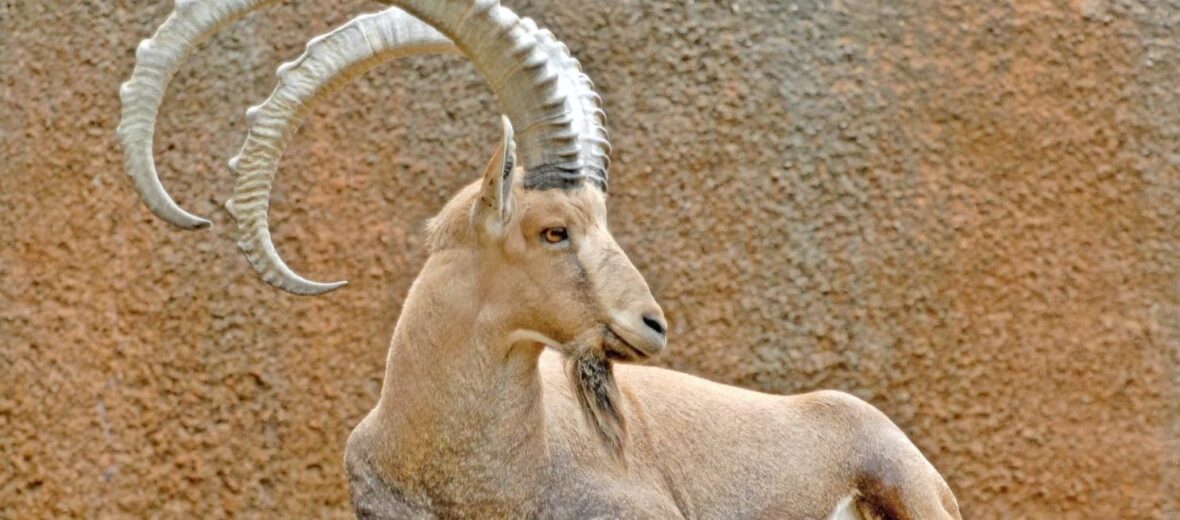
The nubian ibex is just one of 5 subspecies. This particular ibex is the only one adapted to the hot and dry regions of Africa and Saudi Arabia. They prefer higher elevations; sometimes up to 22,000 feet up! These agile critters can often be spotted easily scaling precariously steep ranges in order to avoid predators. The ibex, even though cloven footed, has the climbing ability that would rival that of Spiderman. This species of ibex is listed as Vulnerable by the IUCN, due to habitat destruction. This article is on special request from my friend, Sutty.
First the Stats…
Scientific name: Capra nubiana
Weight: Up to 145 lbs.
Length: Up to 4.1 feet
Height: Up to 2.5 feet
Lifespan: Up to 17 years
Now on to the Facts!
1.) The ibex males use their long beard to spread their scent and to attract females. The longer the beard, the more attractive the male.
2.) Both males and females grow horns, but the male’s horns are much larger.
3.) They are diurnal (active during the day) and during the evening they sleep high up in the cliffs to avoid predators.
4.) Ibex, in general, are strict herbivores (eat plant matter) that enjoy leaves, grasses, flowers, and bark.
5.) Their predators are leopards, eagles, and also bearded vultures.
But wait, there’s more on the nubian ibex!
6.) Nubian ibexes are undulates (animals with cloven hooves).
7.) During their rut, the males will try to gain access to females by licking their anal region, sniffing them, and nuzzling.
Did you know…?
Their backwards-facing horns can grow up to 4 feet long!
8.) When in rut, males will ram against each other with their massive horns to assert dominance and secure females for their harem.
9.) Females birth 1 calf in March.
10.) They roam in herds of up to 20 members.
But wait, there’s still more on the nubian ibex!
11.) Rather than rely on vocalizations, they depend on eye contact, posture, and chemical secretions to communicate intentions with one another. Males will also stick out their tongue and arch their lips.
12.) Flocks of grackles peck at the hides of the nubian ibex searching for parasites and other potentially harmful insects. Only 1 grackle claims an ibex at a time, and they often fight for their right to claim their own ibex.
Now a Short Nubian Ibex Video!
Also, check out the Critter Science YouTube channel. Videos added frequently!
Want to suggest a critter for me to write about? Let me know here.



